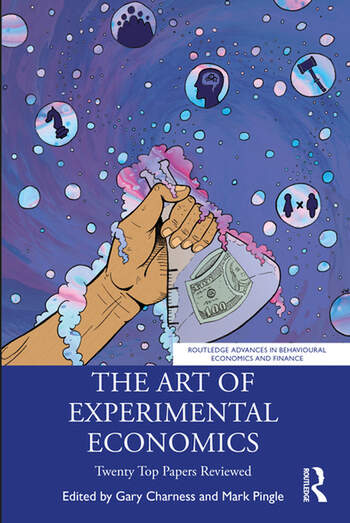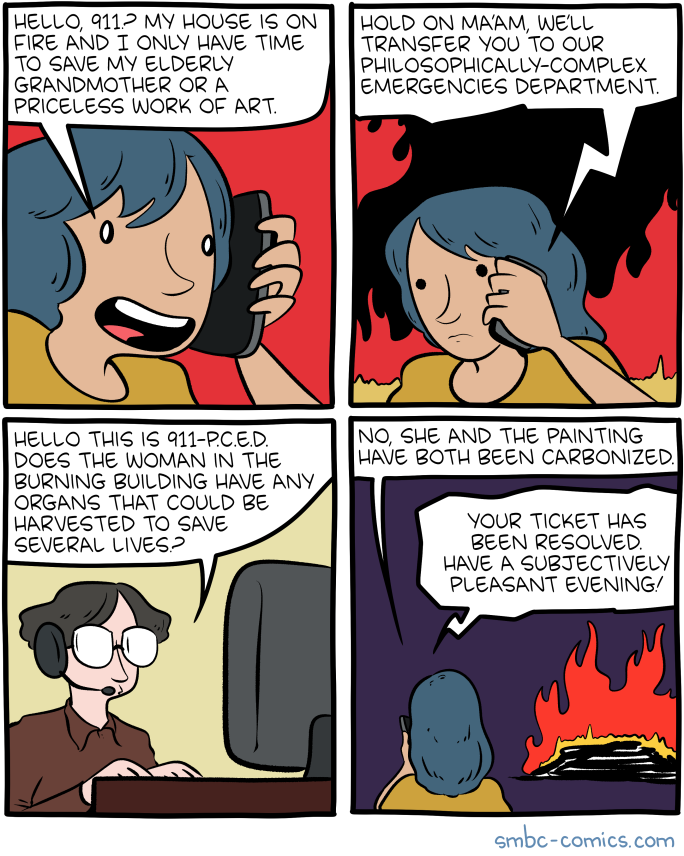Session 4: Psychology and Economics
As we have done for many years, this workshop brings together researchers working on issues at the intersection of psychology and economics. The segment will focus on evidence of and explanations for non-standard choice patterns, as well as the positive and normative implications of those patterns in a wide range of economic decision-making contexts, such as lifecycle consumption and savings, workplace productivity, health, and prosocial behavior. The presentations will frequently build upon insights from other disciplines, including psychology and sociology. Theoretical, empirical, and experimental studies will be included.
In This Session
Monday, August 9, 2021
The Gender Gap in Self-Promotion
In applications, interviews, performance reviews, and many other environments, individuals subjectively describe their ability and performance to others. We run a series of experiments, involving over 4,000 participants from online labor markets and over 10,000 school-aged youth. We find a large gender gap in self-promotion: Women subjectively describe their ability and performance to potential employers less favorably than equally performing men. Even when all incentives to promote are removed, however, the gender gap remains. The gender gap in self-promotion is reflective of an underlying gender gap in how individuals subjectively evaluate their own performance. This underlying gender gap proves persistent and arises as early as the sixth grade.
Partial Equilibrium Thinking in General Equilibrium
We develop a theory of “Partial Equilibrium Thinking” (PET), whereby agents fail to understand the general equilibrium consequences of their actions when inferring information from endogenous outcomes. PET generates a two-way feedback effect between outcomes and beliefs, which can lead to arbitrarily large deviations from fundamentals. In financial markets, PET equilibrium outcomes exhibit over-reaction, excess volatility, high trading volume, and return predictability. We extend our model to allow for rationality of higher-order beliefs, general forms of model misspecification, and heterogenous agents. We show that more sophisticated agents may contribute to greater departures from rationality. We also draw a distinction between models of misinference and models with biases in Bayesian updating, and study how these two departures from rationality interact. Misinference from mistakenly assuming the world is rational amplifies biases in Bayesian updating.
Break
Belief-Updating: Inference versus Extrapolation
Survey forecasts of macroeconomic and financial variables show widespread overreaction to news, but laboratory experiments on belief updating typically find underinference from signals. We provide new experimental evidence to connect these two seemingly inconsistent phenomena. Building on a classic experimental paradigm, we study how people make inferences and revise forecasts in the same fully-specified information environment. Subjects underreact to signals when inferring about fundamental states (“underinference”), but overreact to signals when revising forecasts about future outcomes (“overextrapolation”). In the latter task, subjects appear to be using a mix of simplifying heuristics, such as focusing on the representative state (the state most consistent with the signal) and anchoring on the signal. Additional treatments link our results to the difficulty of recognizing the conceptual connection between inference and forecast revision problems.
Learning in the Household
This paper studies social learning and information pooling within the household using a lab experiment with 400 married couples in Chennai, India. Participants are asked to guess the fraction of red balls in an urn after each spouse privately receives draws from the urn and then has a chance to learn their spouse’s draws through a face-to-face discussion. Guesses are paid for accuracy and the payoff is split equally between the spouses, aligning their incentives. We find that husbands’ beliefs respond less than half as much to information that was collected by their wives, relative to ‘own’ information. This failure of learning is not due to communication frictions: when we directly share their wife’s information with husbands, they continue to under-weight it relative to their own draws. Wives do not display this behavior, and instead equally weight their own and their spouse’s information. In a follow-up experiment with pairs of strangers, individuals of both genders put more weight on their own information than on their partner’s. We conclude that people have a general tendency to under-weight others’ information relative to their own, and speculate that a norm of wives deferring to their husbands may play a countervailing role in our context.
Break
Does Saving Cause Borrowing?
We study whether or not nudging individuals to save more has the unintended consequence of additional borrowing in high-interest unsecured consumer credit. We analyze the effects of a large-scale experiment in which 3.1 million bank customers were nudged to save more via (bi-)weekly SMS and ATM messages. Using Machine Learning methods for causal inference, we build a score to sort individuals according to their predicted treatment effect. We then focus on the individuals in the top quartile of the distribution of predicted treatment effects who have a credit card and were paying interest at baseline. Relative to their control, this group increased their savings by 5.7% on average or 61.84 USD per month. At the same time, we can rule out increases in credit card interest larger than 1.25 USD with 95% statistical confidence. We thus estimate that for every additional dollar of savings, individuals incur less than 2 cents in additional borrowing cost. This is a direct test test of the predictions of rational co-holding models, and is an important result to evaluate policy proposals to increase savings via nudges or more forceful measures.
Dynamic Preference "Reversals" and Time Inconsistency
We study identification of time preferences from data sets where an agent at time 0 makes an advance commitment, and later at time 1 can revise their choice. A common intuition, motivating many empirical studies, is that systematic reversals toward certain alternatives imply time inconsistency. We show that this intuition is generally incorrect in environments with random taste shocks. Roughly speaking, the only data that rejects time-consistent expected utility maximization is when a time-0 choice is revealed to be strictly dominated at time 1 with probability 1. This result applies to rich choice sets; to cases where the analyst observes the complete ranking of alternatives in every period and state of the world; to environments where it is natural to impose additional assumptions like concavity; and to cases where the analyst has access to supplementary cardinal information. However, we prove that there is a class of empirical designs that does produce robust point identification of the degree of time inconsistency: designs that estimate agents’ willingness to pay for different alternatives at both time 0 and time 1, and where the marginal utility of money can be assumed to not vary with agents’ time-1 preferences for the different alternatives.
Tuesday, August 10, 2021
Safe Spaces: Shelters or Tribes?
A Model of Justification
I model decision-making constrained by morality, rationality, or other virtues. In addition to a primary preference over outcomes, the decision maker (DM) is characterized by a set of preferences that he considers justifiable. In each choice setting, he maximizes his primary preference over the subset of alternatives that maximize at least one of the justifiable preferences. The justification model unites a broad class of empirical work on distributional preferences, charitable donations, prejudice/discrimination, and corruption/bribery. I provide full behavioral characterizations of several variants of the justification model as well as practical tools for identifying primary preferences and justifications from choice behavior. I show that identification is partial in general, but full identification can be achieved by including lotteries in the domain and allowing for heterogeneity in both primary preferences and justifications. Since the heterogeneous model uses between-subject data, it is robust to consistency motives that may arise in within-subject experiments. I extend the heterogeneous model to information choice and show that it accounts for observed patterns of information demand and avoidance on ethical domains.
Break
How Flexible is that Functional Form? Measuring the Restrictiveness of Theories
We propose a new way to quantify the restrictiveness of an economic model, based on how well the model fits simulated, hypothetical data sets. The data sets are drawn at random from a distribution that satisfies some application-dependent content restrictions (such as that people prefer more money to less). Models that can fit almost all hypothetical data well are not restrictive. To illustrate our approach, we evaluate the restrictiveness of popular behavioral models in two experimental settings—certainty equivalents and initial play— and explain how restrictiveness reveals new insights about each of the models.
Choice and Complexity
We study two dimensions of complexity that may affect individual decision-making. The first one is object complexity, which corresponds to the difficulty of evaluating any given object in the choice set. The second dimension is composition complexity, which refers to the difficulty of finding the best among similar alternatives. We develop a satisficing-with-evaluation-errors model that incorporates both dimensions and delivers sharp empirical predictions about their effect on choice behavior. We test these predictions in a novel data set with information on hundreds of millions of decisions in chess endgames. Chess endgames admit an objective measure of choice quality and, most importantly, have ample variation in object and composition complexity. Consistent with the theory, we document that even highly experienced decision makers are significantly more likely to make suboptimal choices as complexity increases along either dimension. Our analysis, therefore, helps to shed some of the first light on the role of complexity in decision-making outside of the laboratory.
Break
Incentive Complexity, Bounded Rationality, and Effort Provision
This paper shows that dynamic incentives embedded in an organization’s workplace incentive scheme can be a shrouded attribute, due to contract complexity and worker bounded rationality. This is true in field experiments within the firm, and in complementary online experiments with real eort tasks. Structural estimates indicate that rational agents who fully understand the incentive scheme would behave sigificantly dierent from what we observe. A response to dynamic incentives does emerge when we reduce complexity or look at workers with higher cognitive ability. The results illustrate the potential value of complexity to organizations, they demonstrate that complex incentive contracts may allow firms to be achieve better than second-best, they identify specific features of contracts that can influence the eectiveness of incentives through the channel of complexity, and they imply heterogeneous eects of incentives depending on worker cognitive ability.
The Negative Consequences of Loss-Framed Performance Incentives
Behavioral economists have proposed that incentive contracts result in higher productivity when bonuses are "loss framed" prepaid then clawed back if targets are unmet. We test this claim in a large-scale field experiment. Holding financial incentives fixed, we randomized the pre- or postpayment of sales bonuses at 294 car dealerships. Prepayment was estimated to reduce sales by 5%, generating a revenue loss of $45 million over 4 months. We document, both empirically and theoretically, that negative effects of loss framing can arise due to an increase in incentives for "gaming" behaviors. Based on these claims, we reassess the common wisdom regarding the desirability of loss framing.











